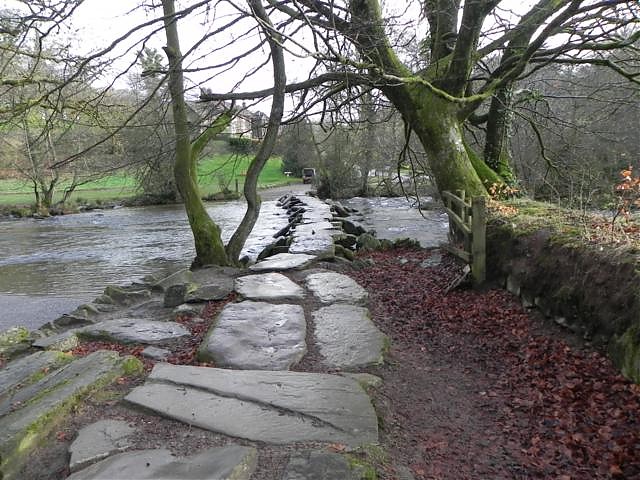
Bridge Name: Tarr Steps Clapper Bridge
No.: 11
Location: SS 8676 3211
Build Date:
Engineer:
Description:
Tarr Steps Bridge, one of the earliest examples of a stone bridge constructed before the use of the arch became known. It consists of 17 spans, the covering stones being laid flat without mortar or cement on pillars of rough stone placed upon the river bed. The pillars are 4 to 6ft apart and about 3 to 4ft high. Most are spanned by one stone only, the slabs varing from 6 to 8ft long, although one is over 10ft long. The origin of the name is not known.
The middle section of the bridge was carried away by floods in the winter of 1941-2 it was fully restored by Somer Arch Soc and Royal Engineers in 1952, but was again destroyed by floods in August of the same year. The stones were recovered and the bridge was again reconstructed by Royal Engineers.
Tarr Steps (partly in Withypool Parish) Grade 1. An impressive stone ‘clapper’ bridge of an unknown origin. Spans the river Barle. Length 180ft including paved approaches, width 5ft, the piers extending beyond the pathway 5ft on either side. There are 17 openings, the widest in the middle. The horizontal slabs havean average length of 7ft the longest being 8.5ft; there is no mortar or cement. Ancient Monument. Restored following 1952 flood damage.1
Tarr Steps, on the track leading from Winsford to Hawkridge, is a clapper bridge with seventeen spans. The flat stones, or clappers, average about 5 feet in width, while the piers are about 15 feet in width. The total length of the bridge is 180 feet. Although bridges of this type are by no means uncommon, this is one of the finest examples in this country. In sussex the term “clapper” means a plank, and in that county is often used in reference to raised footways along side roads subject to flooding.2
References:
1. Exmoor National Park HER Ref: MSO8673
2. The Ancient Bridges of the South of England – Jervoise